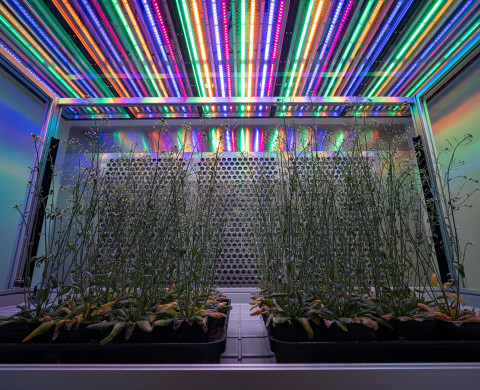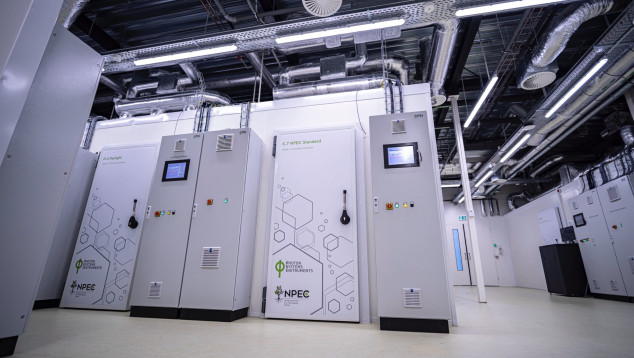NPEC – Multi-Environment Climate Chambers

Details
- Infrastructure type
- Ecotron indoor
- Institute
NPEC’s Multi-Environment Climate Chambers Module hosts a series of 15 small climate chambers with the highest level of homogeneity in temperature, humidity, and light intensity available.
The facility
The Multi-Environment Climate Chambers are designed to study how plants grow under precisely controlled conditions and how they adapt to stress. It allows the simulation of various temperature or light quality and intensity climate conditions. These chambers can provide a continuous temperature between -5°C to above 40°C. A system of controlled LEDs can adjust the light conditions with nine independent channels and a maximum intensity of up to 2000μmol/m2/s. CO2 levels up to 1500ppm ±50ppm.
Research topics
Plants, temperature, humidity, light intensity, light quality
Running period
2023-undetermined
Equipment
15 top-end climate chambers enable researchers to experimentally change environmental parameters with sufficient independent replication to draw robust conclusions on how these parameters affect the plant phenotype. Nine chambers provide a great range in temperature (10-40°C), humidity (35-90% RH), and light intensity (up to 500 μmol/m2/s). In addition, 3 chambers allow continuous plant growth at temperatures as low as -5°C and 3 are outfitted so that they can mimic sunlight in both light intensity (2000 μmol/m2/s) and light quality (9 independently controlled colour channels). Plants grown in these chambers can be imaged in Helios for further phenotyping. A tidal system is used for automating the irrigation process by flooding the table for a given time.
Data management
Within NPEC, each module is outfitted with advanced imaging and sensor systems, initially storing acquired data on the local hard drives of individual PCs. NPEC has implemented a data framework to ensure automatic synchronization of this data from local PCs to either Microsoft Azure or high-end local network storage solutions. This synchronized data, referred to as 'hot', remains available on these systems for several months after the experiments have ended.
Users can securely access this data through MS Azure, even daily during their ongoing experiment, allowing researchers to monitor the progress of the experiments from commencement to conclusion. The NPEC data module has been developed to refine raw sensor data into coherent and usable information for every imaging system and sensor in each module. NPEC is storing data according to the FAIR principles, and to enable re-usability extensive metadata information is stored with the phenotypic data, where the guidelines of MIAPPE are followed. Utilizing Artificial Intelligence (AI) and other sophisticated data processing tools, using automated Python scripts and VM technologies, the module handles complex tasks such as the bulk processing of UAV/ drone images, sensor fusion of multiple imaging systems and extraction of phenotypic traits from 3D point clouds with precision and reliability.
For long-term preservation, the data is subsequently transferred to iRODS and is archived on tape. Medio 2023, NPEC already collected and archived 1.000’s of terabytes.
Conditions for access
Research questions or experiments with the Multi-Environment Climate Chambers can be requested via a form on the NPEC website: www.npec.nl.
Details
- Infrastructure type
- Ecotron indoor
- Institute


